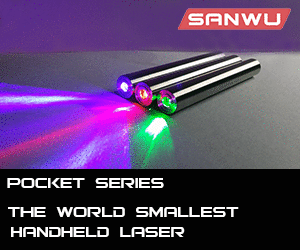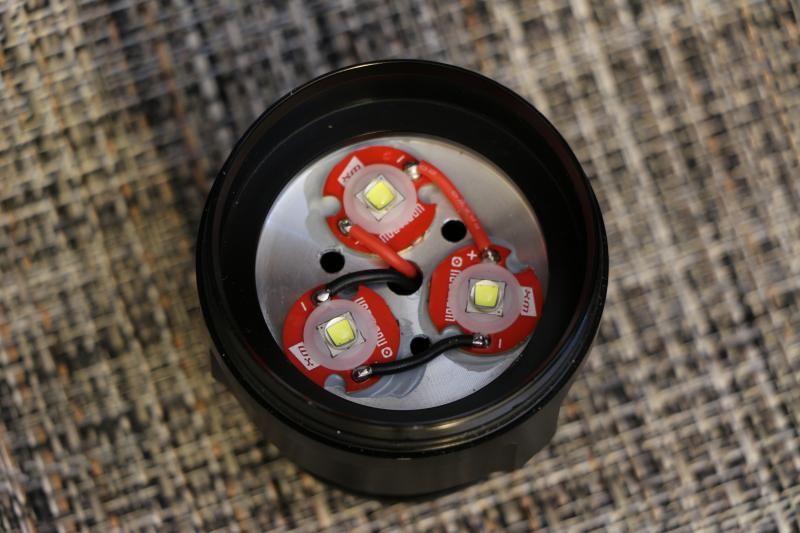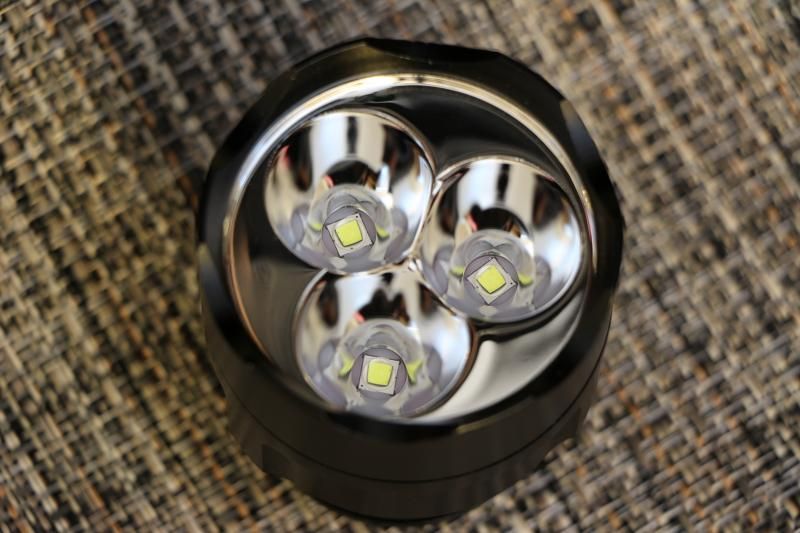Jufran88
0
- Joined
- Feb 9, 2011
- Messages
- 578
- Points
- 0
Here's another DX light :yh::
fandyfire-stl-v2-cree-xm-lt6-5-mode-1000-lumen-white-3-led-flashlight-black-2-x-18650
- 5 modes: high, medium, low, slow strobe, SOS
- Claims 3000 Lumens (over-rated)
- 1000mA output per LED
- Smooth (SMO) reflector
- Mode memory
I got this light through DX's USA warehouse which came in 5 days later after ordering. The price is pretty reasonable for a 3 XM-L flashlight and since it was also available at the USA warehouse was a big plus for me to get it. It came in a cardboard box and the light was in bubble wrap with specs sheet mostly in Chinese.
I've had this light for almost a month now so I had time to put it through it's paces and it's pretty robust. At first glance the anodizing is decent, no visible cracks unless you look at the threaded parts. The light wasn't properly lubed when I got it because it was making squeaking noises on all removable parts. [sad face]
DX claims it outputs 3000 lumens, which is a overstatement, they usually like to exaggerate lumen output on flashlights they sell. On the light itself it says 1000 Lumens. Comparing it to my Ultrafire TH-T60, this light is a bit brighter. On the multimeter she outputs a whopping 1.658A on high at the tail-cap. I'm pretty sure this light is driven on a boost driver, but since the manufacturer sanded out the part numbers on the ICs its difficult to tell.
I wasn't able to take apart the reflector from the head of the light, which was kind of disappointing because I wanted to see how they wired the LEDs in series or parallel. It's like they super-glued the screw to the body. I almost stripped the head of the screw trying to get it off. It looks similar to another reflector DX sells, but they didn't use the center screw and used the smaller 3 screw holes (1 for wiring, 2 for the screws). Good thing there are other DX members who posted pictures of the actual LED config (in series).
Flashlight pictures:


Front:
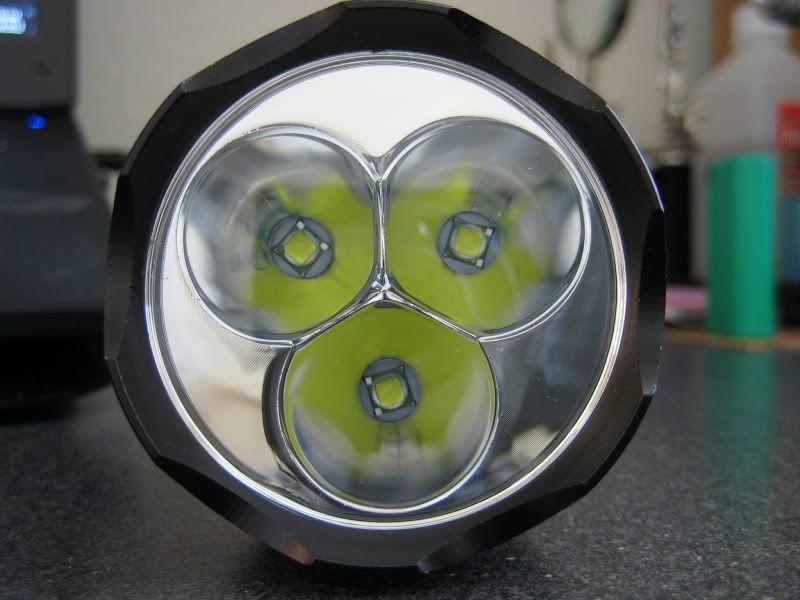
Head:
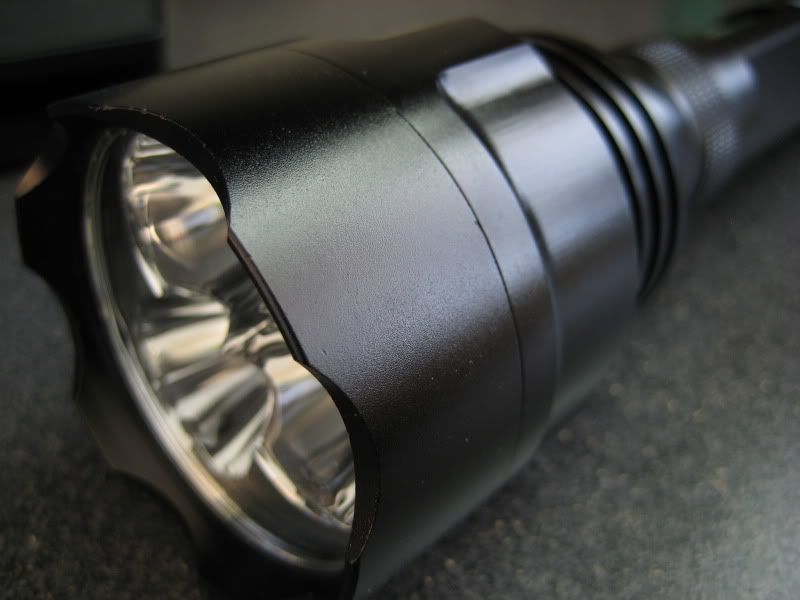
Upper mid piece:

Mid:
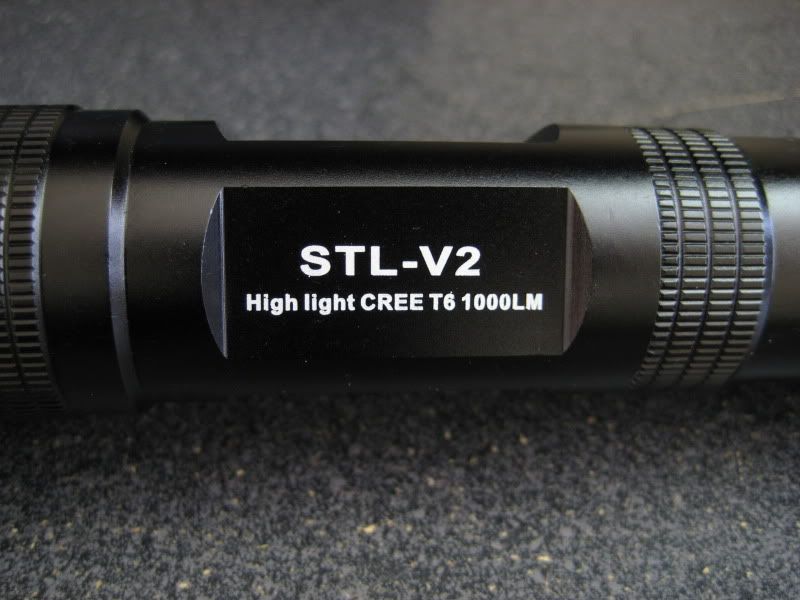
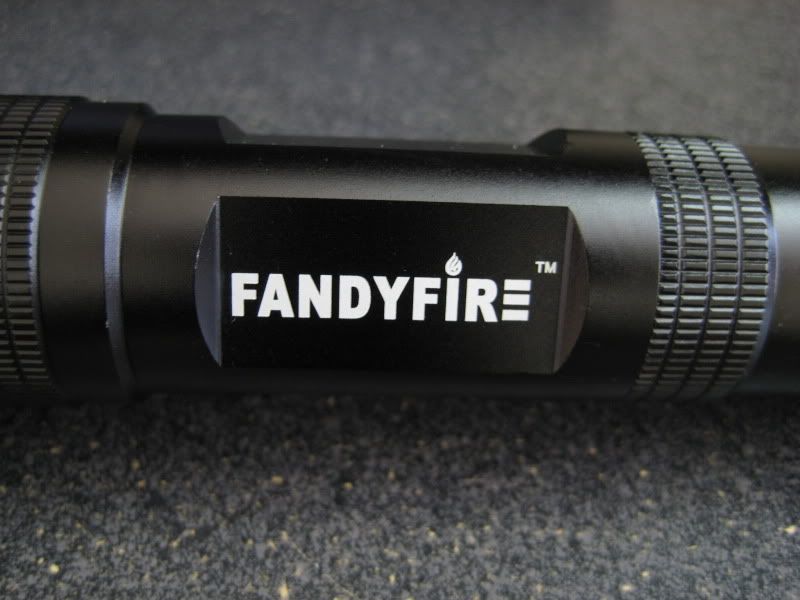
End:
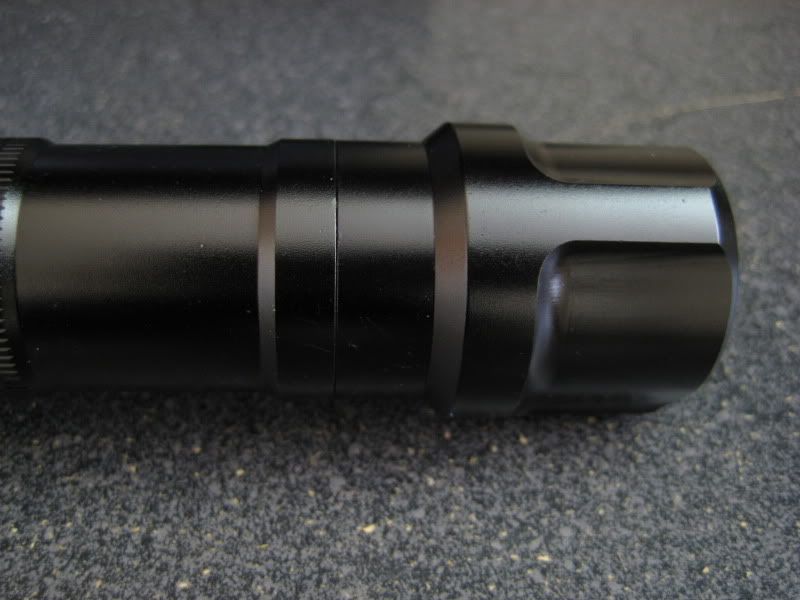
Tail-cap
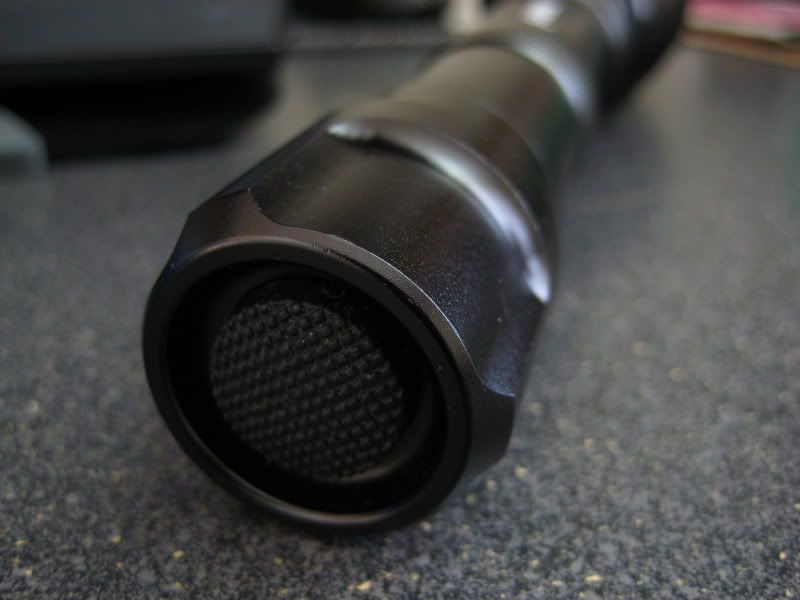
Tail-cap unscrewed (not lubed ):
):
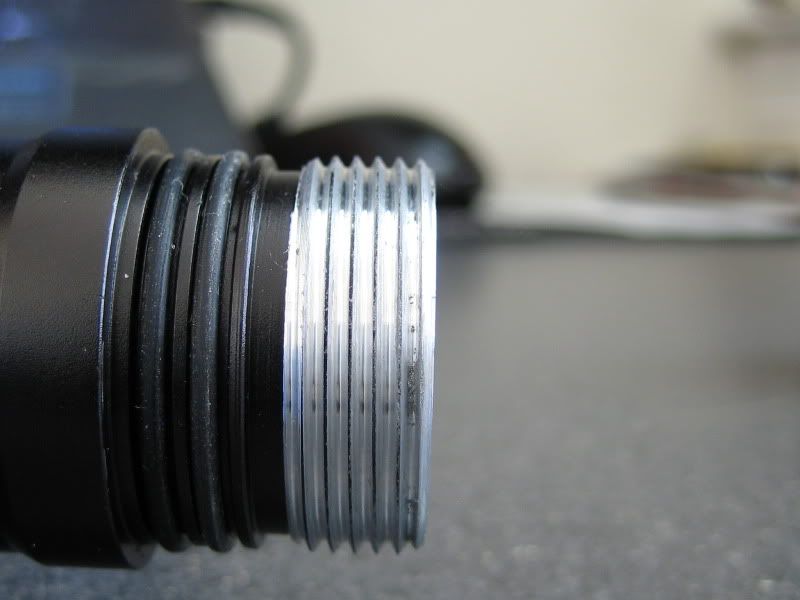
Head unscrewed (not lubed, again ):
):

Close-up:

Light disassembled:
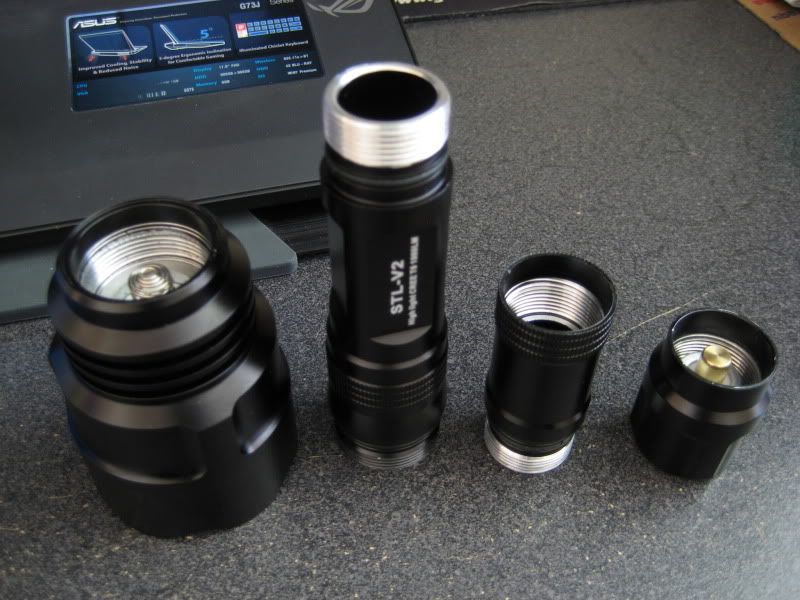
Under the head (I like the spring, it goes easy when putting the batteries in):
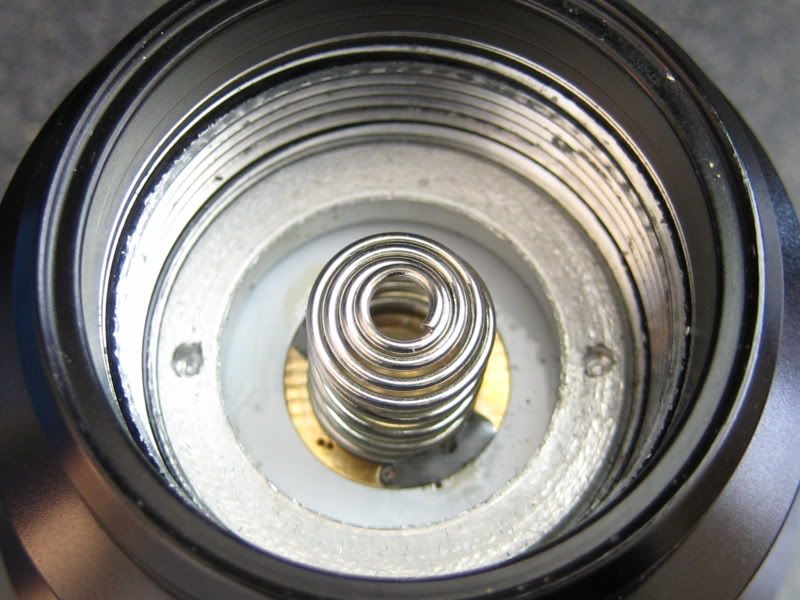
Under the tail-cap:
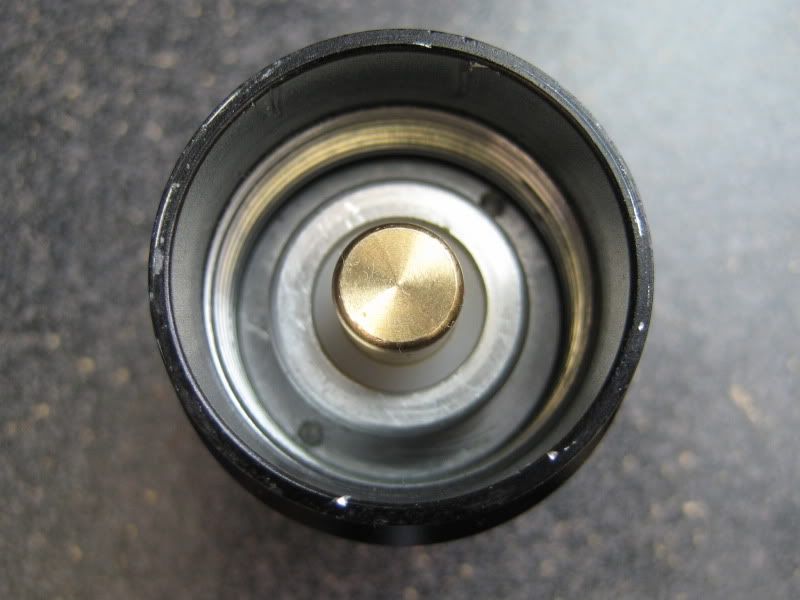
Tail-cap disassembled:
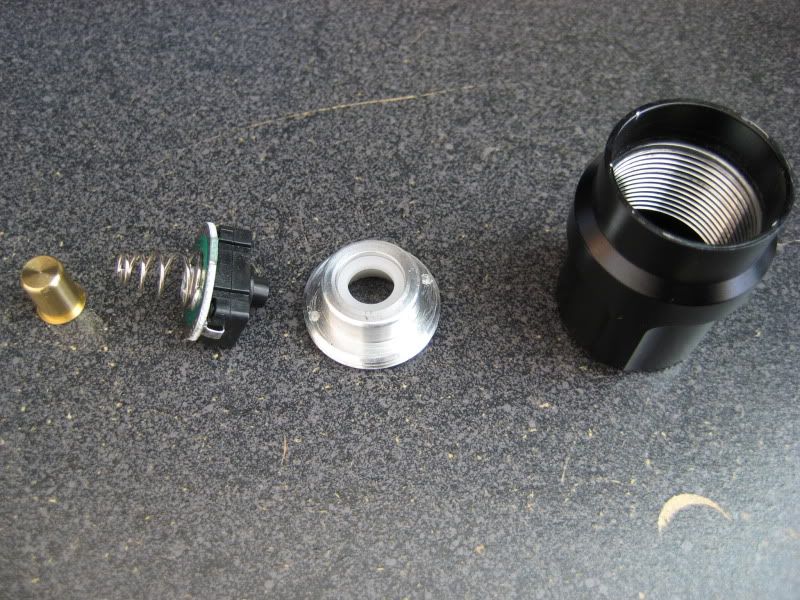
Clicky close-up (rated for 1.5A only?! :wtf :
:
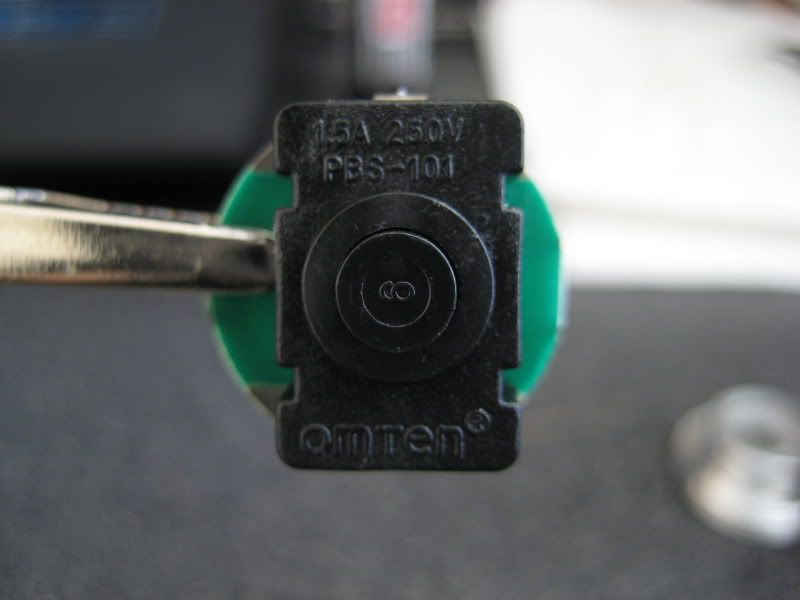
Head disassembled to get to the driver:
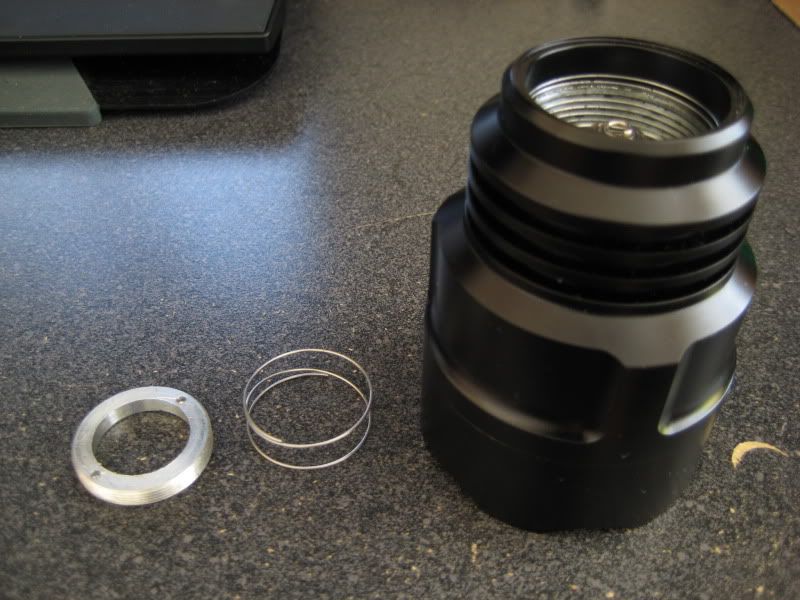

2 difficult screws that won't budge to take out the reflector :
:
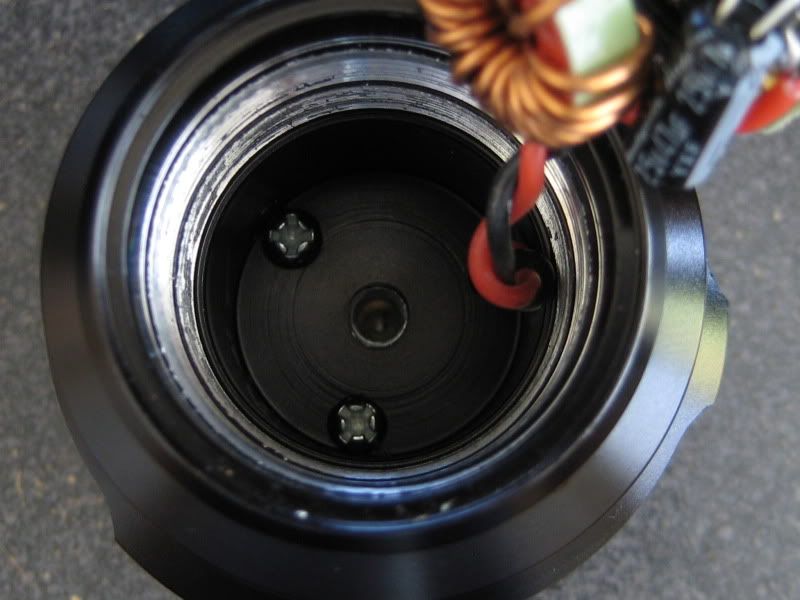
Driver (IC part sanded off):
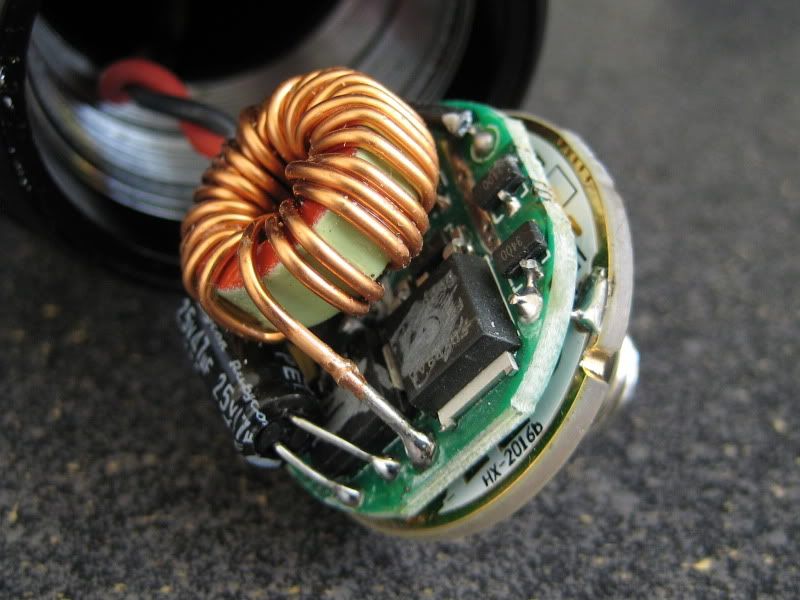
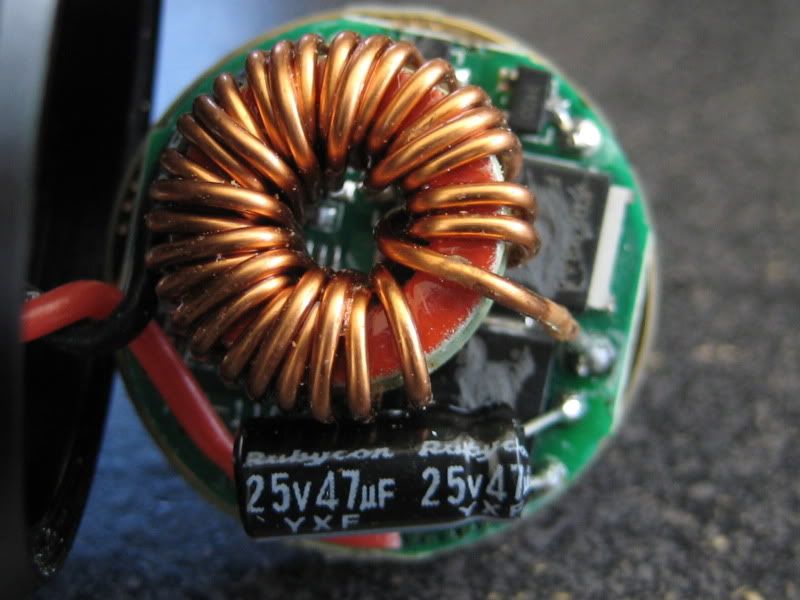
Double sided board, second board is just used as a cover:
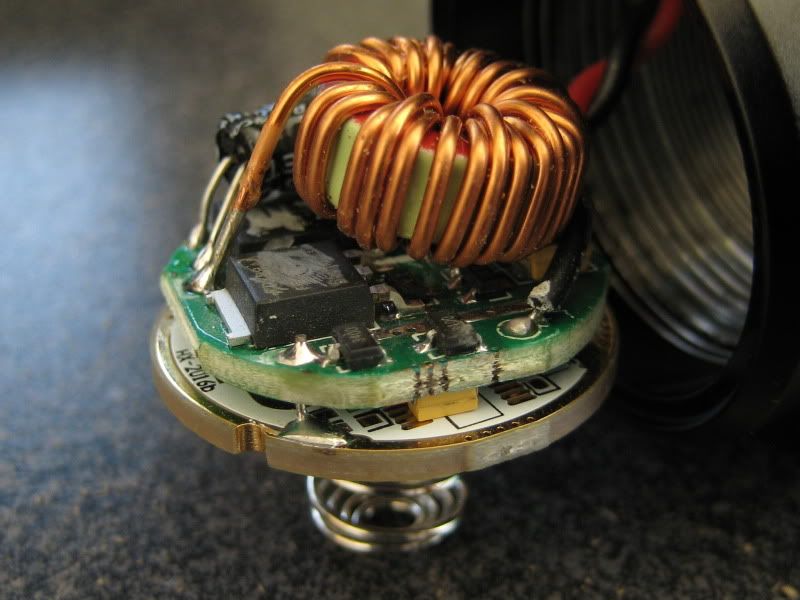
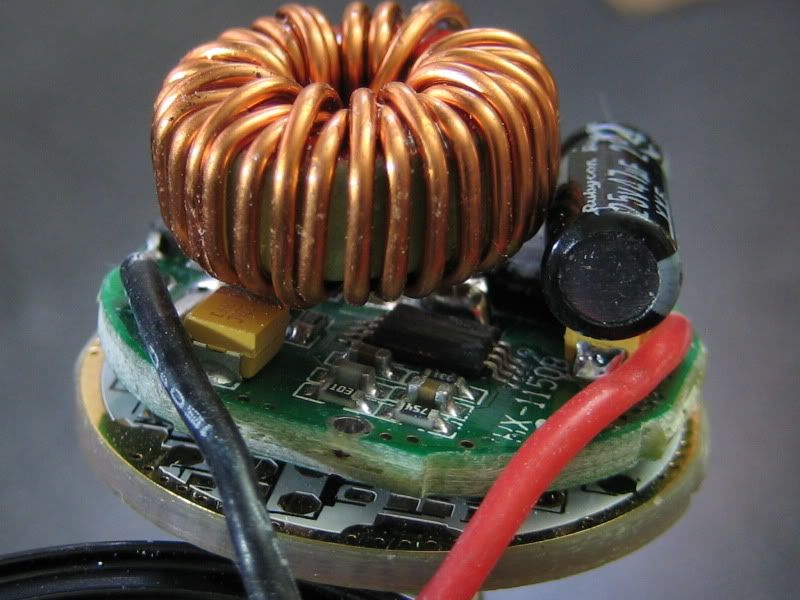
Beamshots :drool::
These Pictures were taken locally by the delta which flows out all the way to San Francisco Bay :yh:. Some pictures were taken with a 15 sec exposure:
Control:
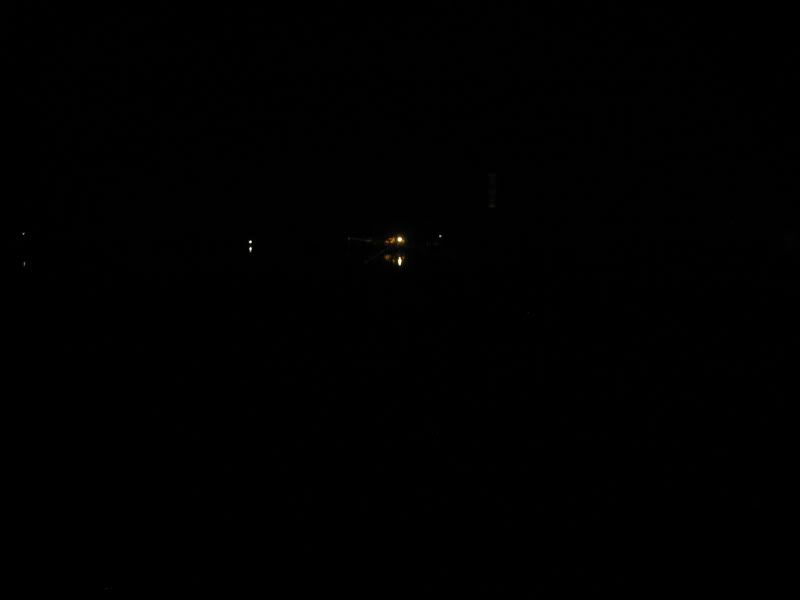
High:

Mid:
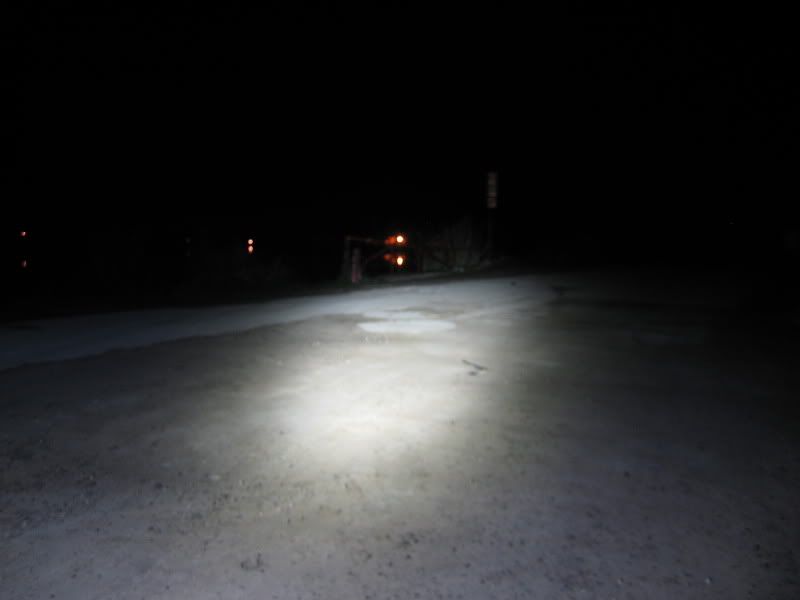
Low:

Quick comparison to my Maglite U2 (Fandyfire left, Maglite U2 right):
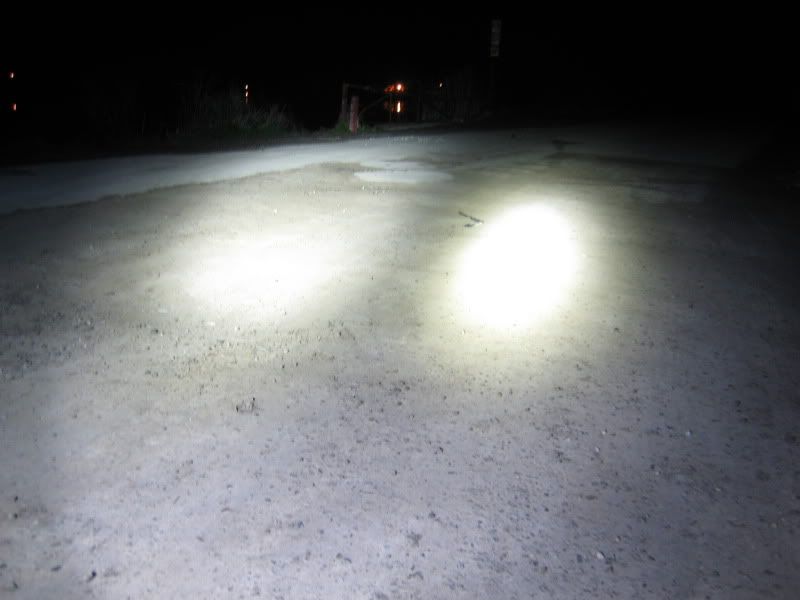
Off:
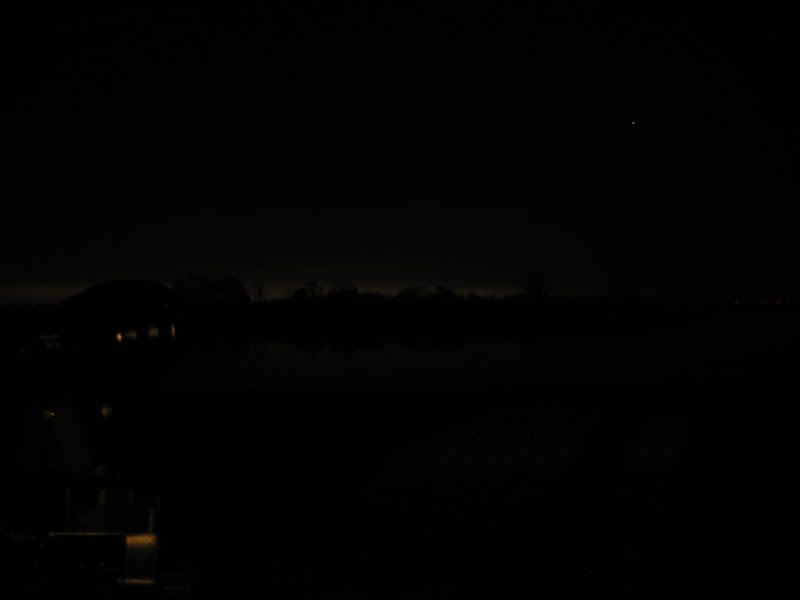
On:
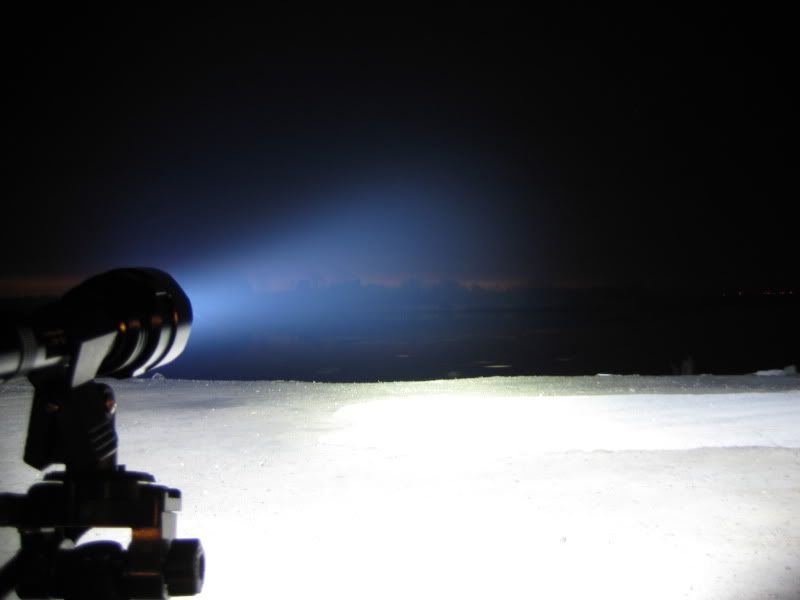
One of my favorite shots! :
:
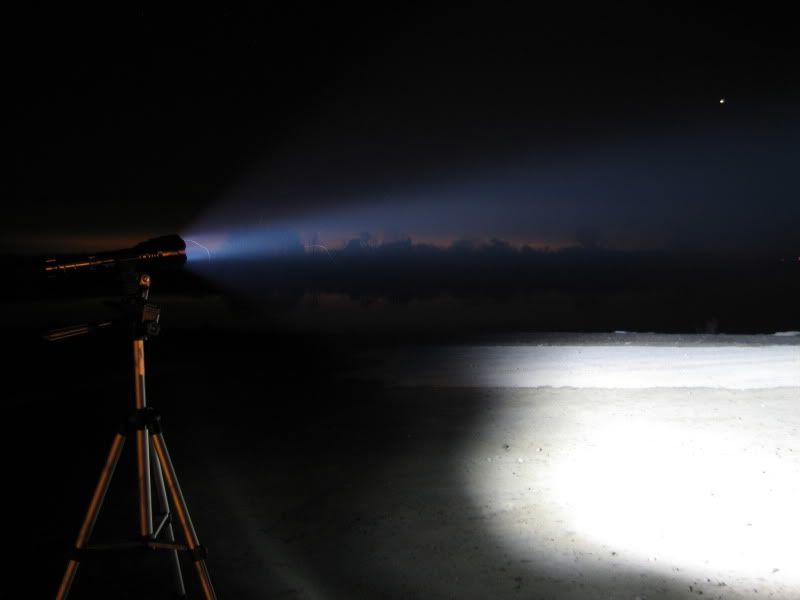
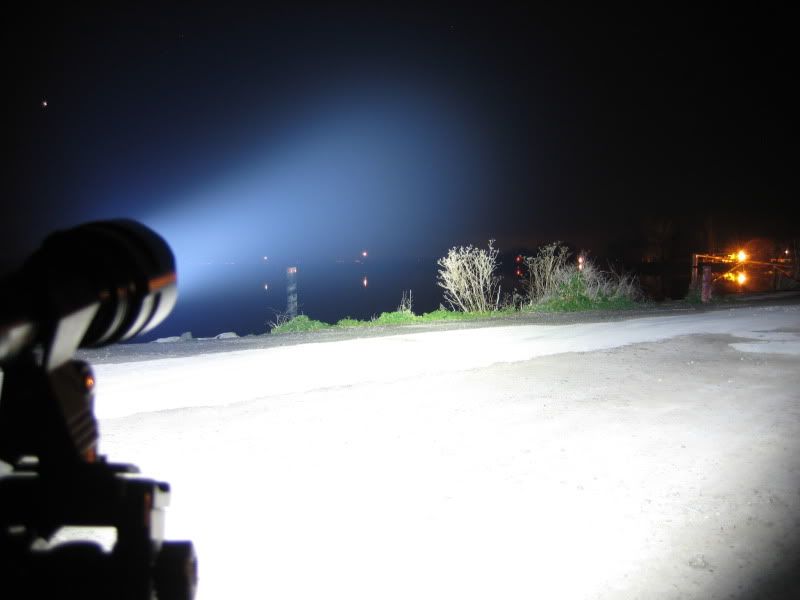

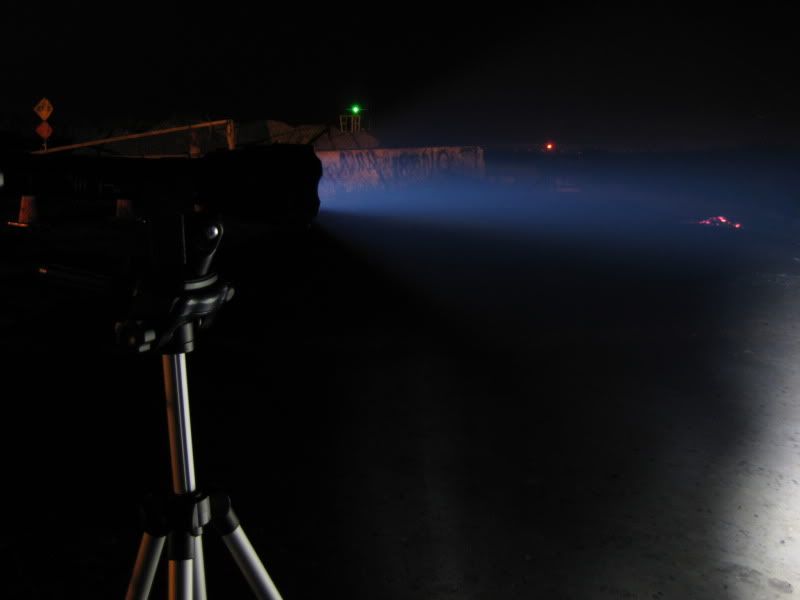
Fandyfire top, Maglite U2 bottom:
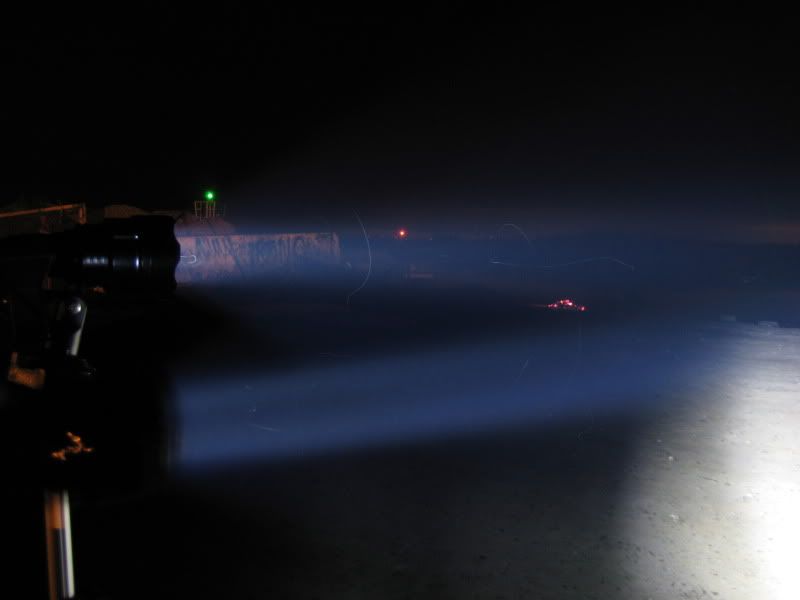
Modes video:
Testing:
Judging by the way the LEDs are wired (in series) and looking at the driver (boost), the actual current at the tail-cap isn't the definite value going through the LEDs.
I covered the light with my beanie because it was too bright to see anything:

High: 1.658 A
Mid: 799 mA
Low: 154 mA
Slow Strobe: 1.21 A
SOS: 1.63 A
I also took a video of the temperature reading after 10 minutes continuously on high. I used 0.86 emissivity value on the black anodized aluminum body. This is just an estimate since I haven't found the exact value after searching online. So take this as an approximate temperature reading and not the actual. Please correct me if I'm wrong about the emissivity.
I don't know what the noise is, it's definitely not crickets, I'm in my room closed doors and windows. Probably some electrical noise?
Final thoughts:
The light feels solid and the anodizing is great. It's a very bright light that floods very well, but doesn't throw as much. The only few things that bothered me was the lack of lube used on the threaded parts and O-rings. The squeaking made it feel somewhat cheap. The current output could be fixed by modifying the driver or using a different driver, but I think I'll leave it as is for the time being. It's definitely one of my favorite flashlight to date despite some of the noted flaws.

fandyfire-stl-v2-cree-xm-lt6-5-mode-1000-lumen-white-3-led-flashlight-black-2-x-18650
- 5 modes: high, medium, low, slow strobe, SOS
- Claims 3000 Lumens (over-rated)
- 1000mA output per LED
- Smooth (SMO) reflector
- Mode memory
I got this light through DX's USA warehouse which came in 5 days later after ordering. The price is pretty reasonable for a 3 XM-L flashlight and since it was also available at the USA warehouse was a big plus for me to get it. It came in a cardboard box and the light was in bubble wrap with specs sheet mostly in Chinese.
I've had this light for almost a month now so I had time to put it through it's paces and it's pretty robust. At first glance the anodizing is decent, no visible cracks unless you look at the threaded parts. The light wasn't properly lubed when I got it because it was making squeaking noises on all removable parts. [sad face]
DX claims it outputs 3000 lumens, which is a overstatement, they usually like to exaggerate lumen output on flashlights they sell. On the light itself it says 1000 Lumens. Comparing it to my Ultrafire TH-T60, this light is a bit brighter. On the multimeter she outputs a whopping 1.658A on high at the tail-cap. I'm pretty sure this light is driven on a boost driver, but since the manufacturer sanded out the part numbers on the ICs its difficult to tell.
I wasn't able to take apart the reflector from the head of the light, which was kind of disappointing because I wanted to see how they wired the LEDs in series or parallel. It's like they super-glued the screw to the body. I almost stripped the head of the screw trying to get it off. It looks similar to another reflector DX sells, but they didn't use the center screw and used the smaller 3 screw holes (1 for wiring, 2 for the screws). Good thing there are other DX members who posted pictures of the actual LED config (in series).
Flashlight pictures:


Front:

Head:

Upper mid piece:

Mid:


End:

Tail-cap

Tail-cap unscrewed (not lubed

Head unscrewed (not lubed, again

Close-up:

Light disassembled:

Under the head (I like the spring, it goes easy when putting the batteries in):

Under the tail-cap:

Tail-cap disassembled:

Clicky close-up (rated for 1.5A only?! :wtf

Head disassembled to get to the driver:


2 difficult screws that won't budge to take out the reflector

Driver (IC part sanded off):


Double sided board, second board is just used as a cover:


Beamshots :drool::
These Pictures were taken locally by the delta which flows out all the way to San Francisco Bay :yh:. Some pictures were taken with a 15 sec exposure:
Control:

High:

Mid:

Low:

Quick comparison to my Maglite U2 (Fandyfire left, Maglite U2 right):

Off:

On:

One of my favorite shots!




Fandyfire top, Maglite U2 bottom:

Modes video:
Testing:
Judging by the way the LEDs are wired (in series) and looking at the driver (boost), the actual current at the tail-cap isn't the definite value going through the LEDs.
I covered the light with my beanie because it was too bright to see anything:

High: 1.658 A
Mid: 799 mA
Low: 154 mA
Slow Strobe: 1.21 A
SOS: 1.63 A
I also took a video of the temperature reading after 10 minutes continuously on high. I used 0.86 emissivity value on the black anodized aluminum body. This is just an estimate since I haven't found the exact value after searching online. So take this as an approximate temperature reading and not the actual. Please correct me if I'm wrong about the emissivity.
I don't know what the noise is, it's definitely not crickets, I'm in my room closed doors and windows. Probably some electrical noise?
Final thoughts:
The light feels solid and the anodizing is great. It's a very bright light that floods very well, but doesn't throw as much. The only few things that bothered me was the lack of lube used on the threaded parts and O-rings. The squeaking made it feel somewhat cheap. The current output could be fixed by modifying the driver or using a different driver, but I think I'll leave it as is for the time being. It's definitely one of my favorite flashlight to date despite some of the noted flaws.

Last edited:


